Moose Jaw SK then and now – CPR train station
At least seventy years separate the two images seen in this then and now report. We’ll be looking at the Moose Jaw Saskatchewan CPR train station, first as seen in an old postcard and then how it appears today. This fine old structure looks as good now as it did back in the 1930s when the original image was captured. No longer used by the railway, it’s now home to a number of businesses.
The structure was built in the early 1920s and replaced an earlier station located roughly on the same lot. In fact there were two earlier stations, one from the late 1880s and the other from the late 1890s. The first burned down, while the second, a rather picturesque structure in its own right, soon proved to be too small. Moose Jaw back then was an important and growing divisional point, passenger stop over and transfer station and as such they needed a suitably large structure to serve that need. And so this station was built.
Passenger services passing through Moose Jaw included several transcontinental runs per day along with an endless number of local trains coming and going (there were a lot of branch lines in the area). The station was a busy place, with a large waiting room, a restaurant, railway offices and the like. Well into the 1950s, it was a place of hustle and bustle.
By the 1970s, the CPR’s passenger service was on the decline. The station was still used, but was not the busy place it once was. The only (people) trains visiting were the east and west bound “Canadian” transcontinental runs, one train each way per day. In the late 1970s, Via Rail, a government sponsored organization, took over. They inherited both the CPR’s and CNR’s money losing passenger runs. The last Via trains to visit Moose Jaw were in 1990.
At one time, the railway station was singly the most important building in any town and as such was almost always located at a very predominate spot. Often at the head of downtown, like this one.
The building is constructed of stone and brick. There are three wings (one unseen from our angle), each of varying height. The clock tower is a defining element and is probably the most stand-out feature of the entire complex.
There is some debate as to which architectural style was used in its design. Some experts say Beaux-Arts, others Italianate. My area of expertise is somewhat limited in this field, and so I can’t really comment much. It seems however that these two styles were in many ways similar and shared many common design elements, which I guess has lead to the divide in what one expert believes verses another. Regardless of which side you are on, prominent features include an overall massive presence – no doubt reminding one just how powerful the CPR was and is. Also of note are the terracotta roof tiles and numerous stone elements.
It’s not known how much of the original station was kept when the building was re-purposed. It was early on a Sunday morning, and so of course, we could not go inside to see. You’ll notice that the station, even with it no longer being used as such, has changed little since the first image was captured. I like that, it looks good.
Based on the autos seen in the postcard, we can guess it’s from around the late 1930s. The cars are too small to identify accurately, but it’s easy to see, based on their lines, that some are from that era. A couple 1920s models can be seen too.
Today the building, know as Station Centre, has been converted to retail space and offices. Exactly when that happened is not known but we can assume after the last passenger run ended. Experts are asked to chime in. The CPR still has a large presence, a busy yard and mainline, in behind the old station. Tracks came through Moose Jaw in the 1880s.
The building has been a recognized historic site since 1999.
This postcard seen is hand tinted. Essentially it’s a process where a black and white image is painted with a thin wash making it appear as though shot in colour. Before full colour printing became economical, this was how many postcards of the era were made. Hand tinting was used from the early 1900s if not earlier and was phased out by the 1940s (give or take a bit). The clouds seen in the postcard seem airbrushed in, or in today’s vernacular, photo-shopped.
The person who sent us the scan of this card did not include any other information about it. It does looks similar in style however to other cards we’ve seen from a Vancouver based firm called Camera Products. They were big in the industry at one time and a Google image search turns up hundreds of examples of their work. They were active from the mid-1920s until perhaps the 1950s or later. Most of their postcards, it seems, were printed in England. This card is part of a series and is number #36. We have seen others too.
Moose Jaw has a second railway station of historical interest, a former CNR structure built in the late 1910s. It’s located at the east end of downtown, a few blocks away.
The “then” postcard was sent to us by a reader of this blog (thanks Mike – his second then and now submission, BTW). If you have an old postcard that you’d like us to use in this fashion, by all means send it to us. Scans or the actual card are both fine. We’ll visit that spot to see what it looks like today and then posts the results here in this blog.
To see some of our favourite then and now posts, follow any of these links…
Empress Alberta – then and now.
Gunsmoke: Return to Dodge – then and now.
Calgary then and now – Scarboro United Church.
Then and now overlooking Wayne Alberta.
If you wish more information on what you’ve seen here, by all means contact us!
Date of adventure: May, 2014.
Location: Moose Jaw, SK.
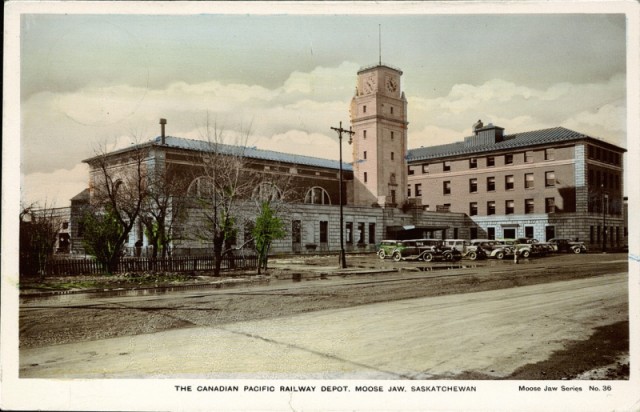
The Moose Jaw SK train station from an old postcard.
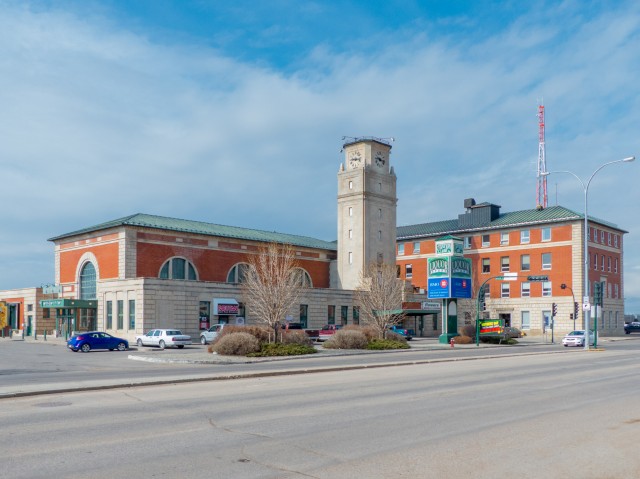
Today the building is known as Station Centre and is home to a number of businesses.

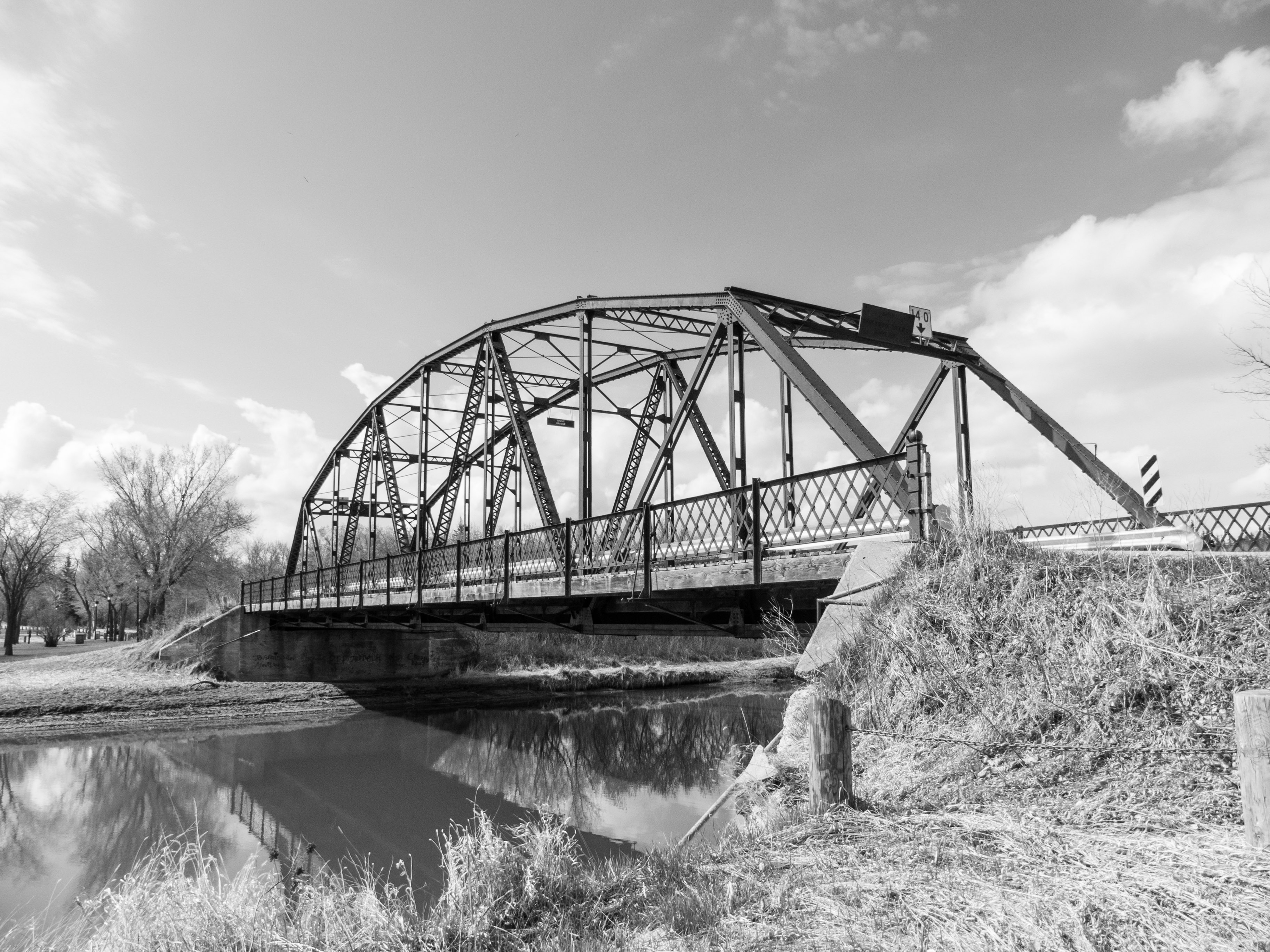
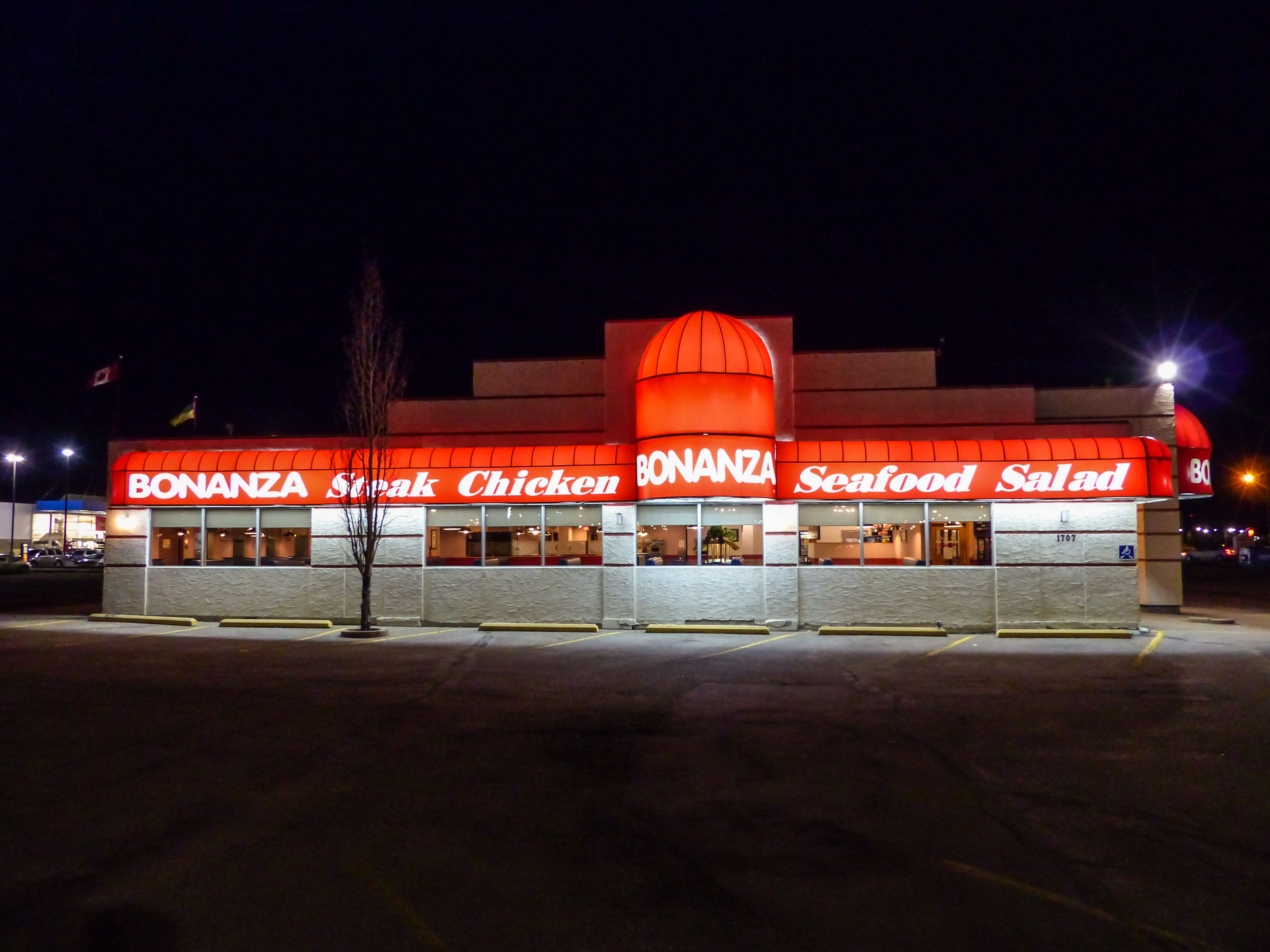
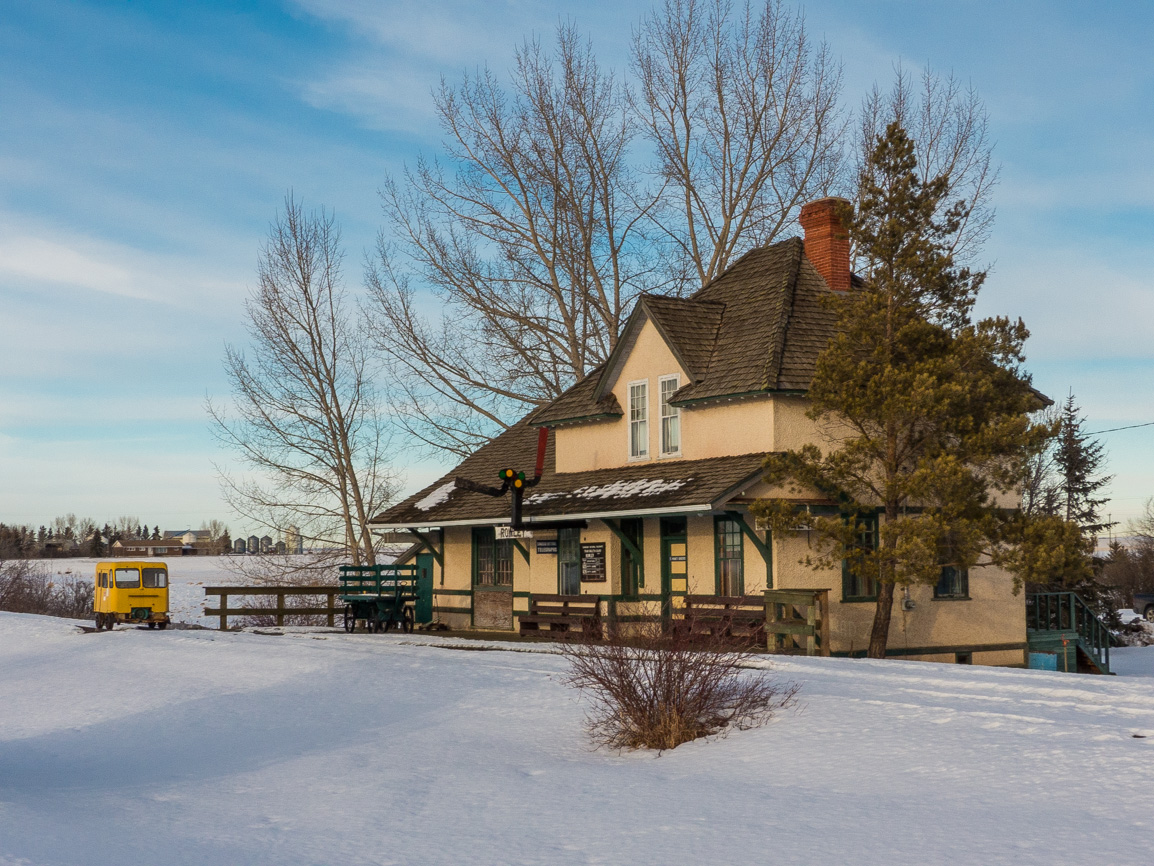
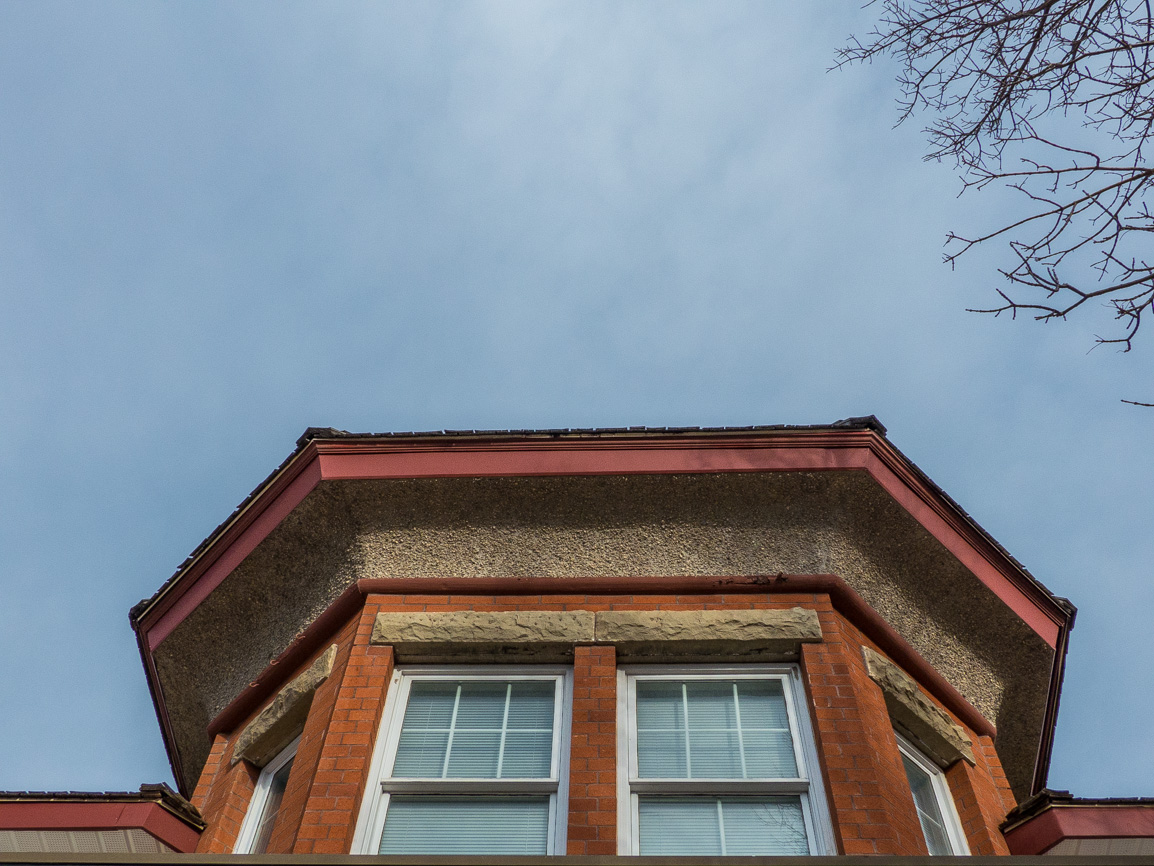
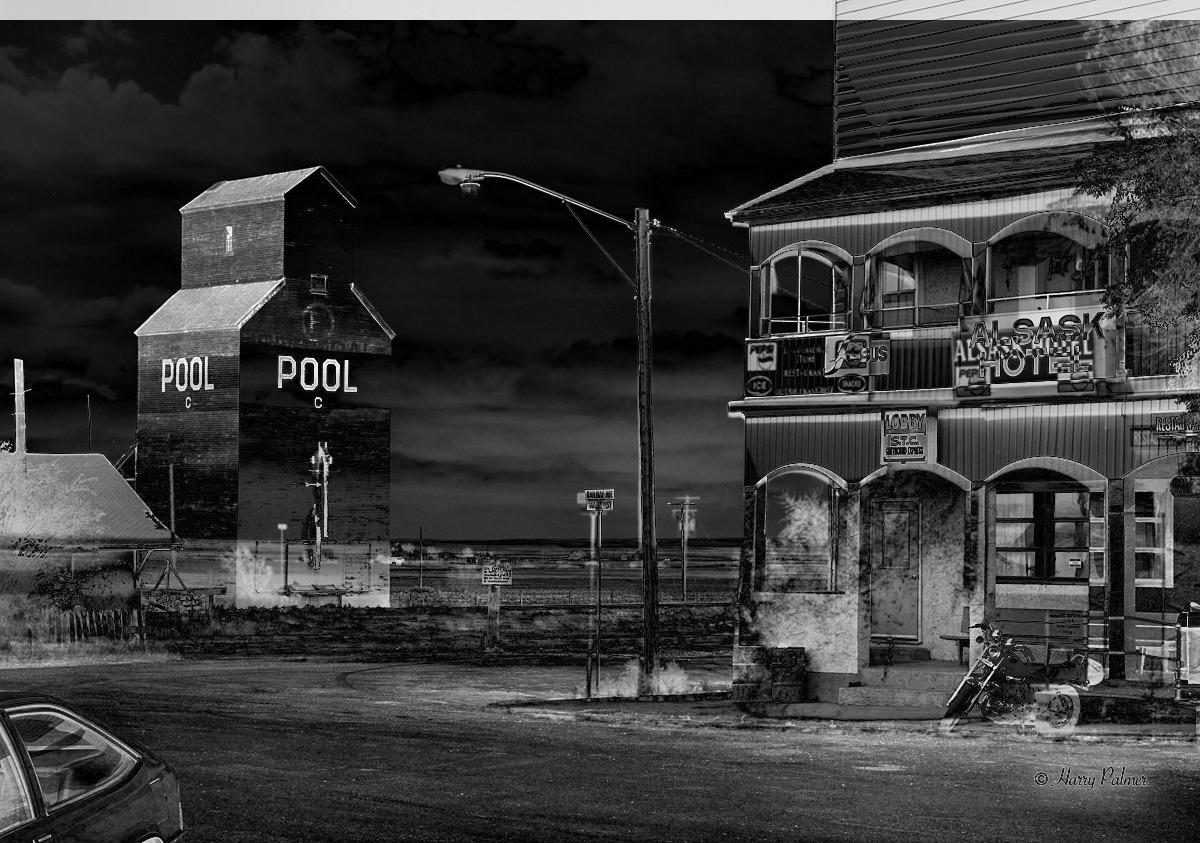
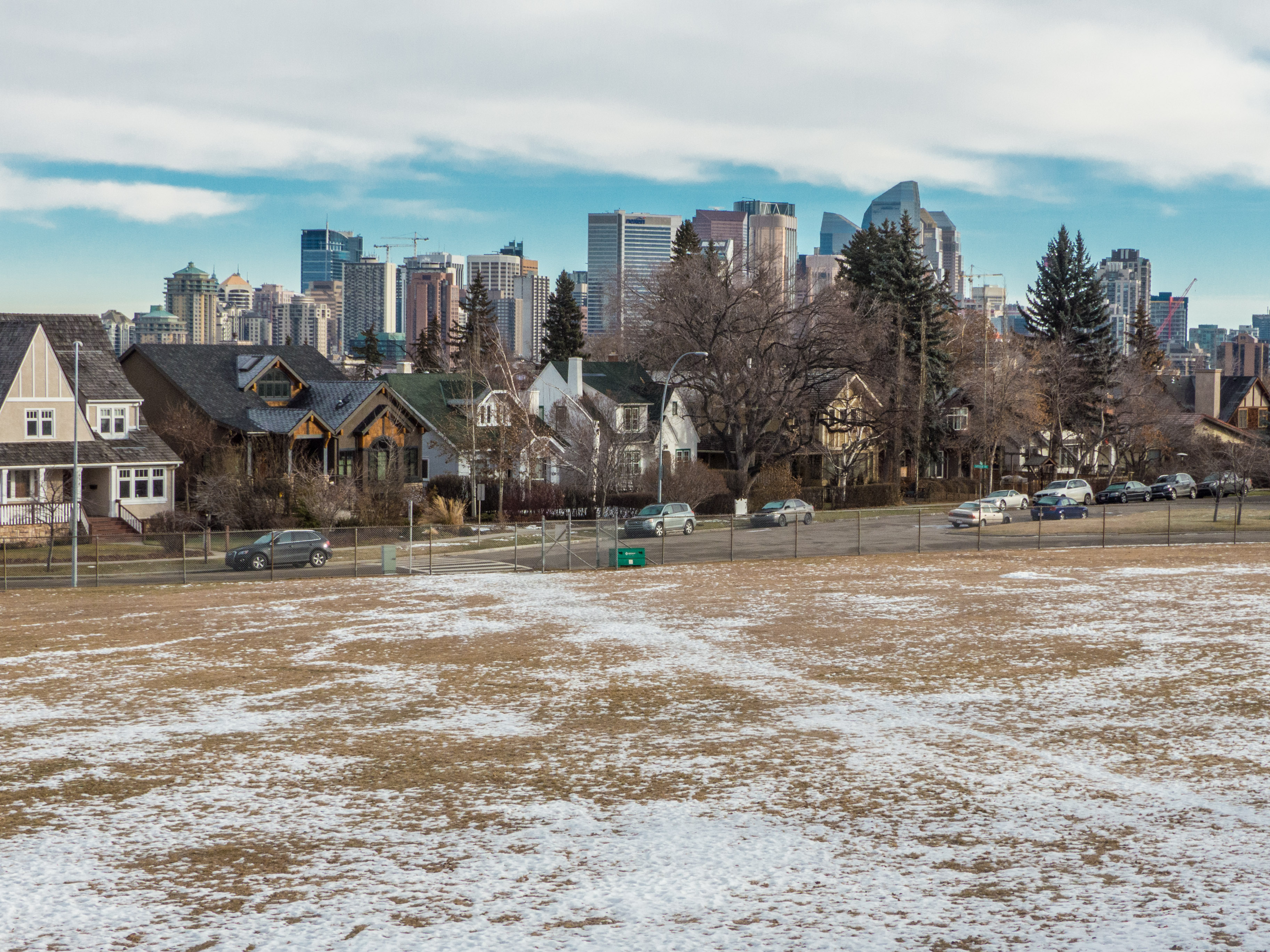
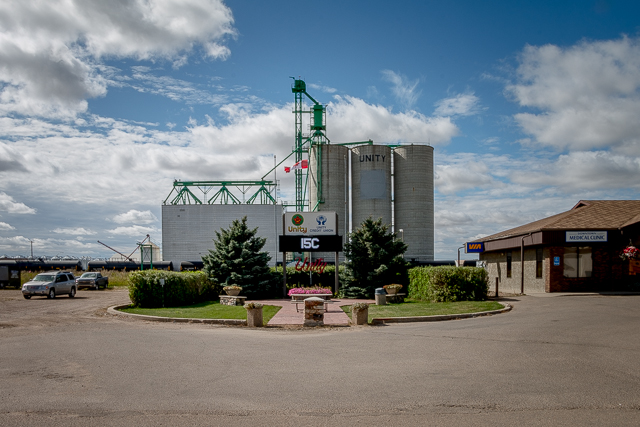
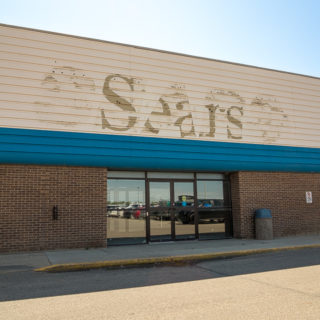
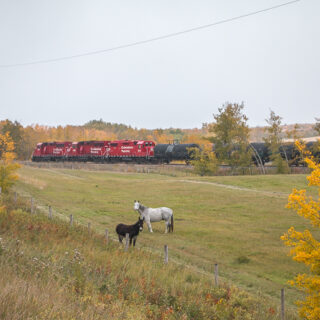
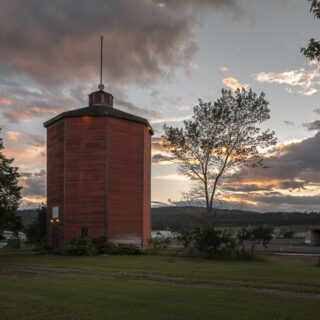
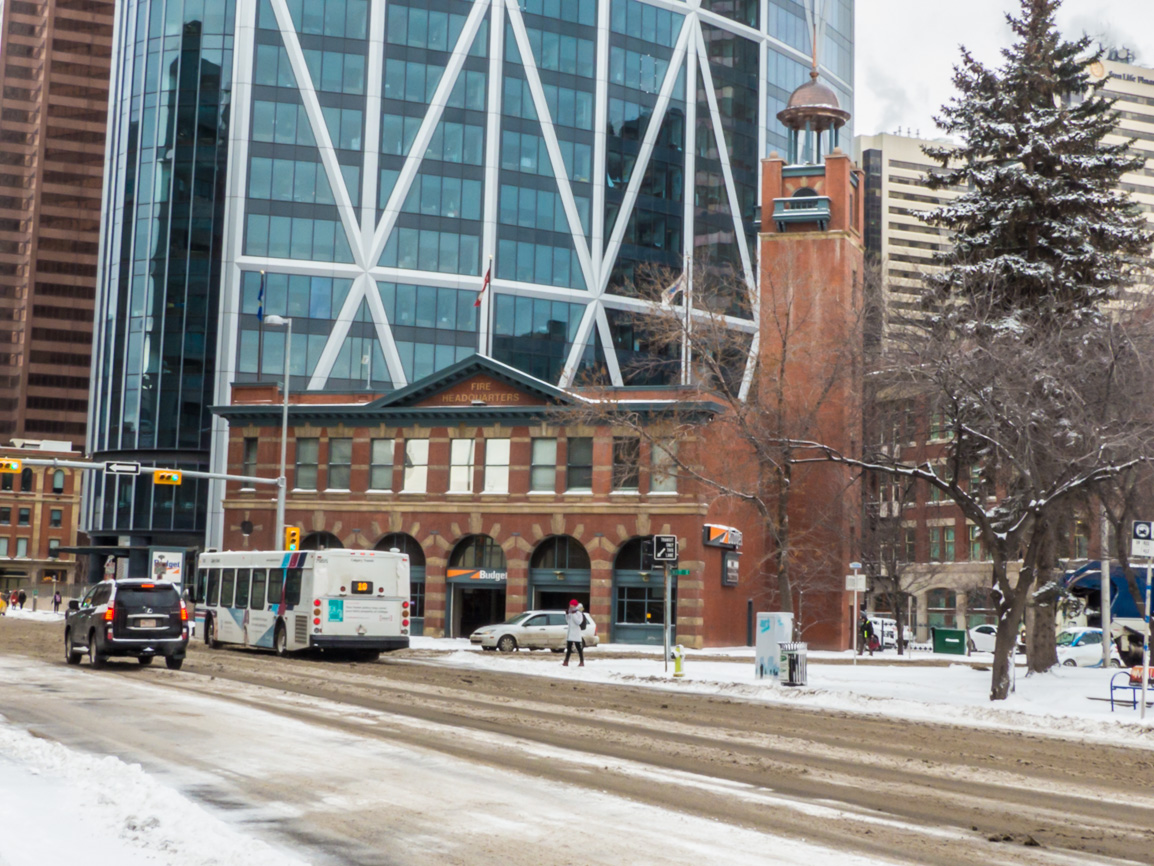
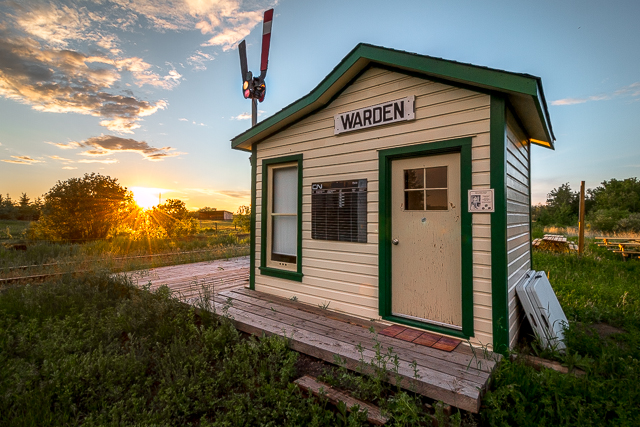
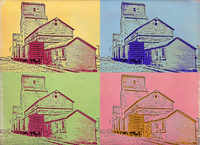






Hi, very interesting article, an excellent account of the buildings history. I have followed the building and history of the Canadian Pacific railway with interest for many years, thank you.
Our pleasure. It sure is a fine old building.
I have to admit I was blown away at seeing the interior of the old Moose Jaw CP station now that it has taken on a new life as an elegant liquor store. Fantastic!!
Of all the things!
Great site guys; further to the clock tower at the CPR station in Moose Jaw, the numbers on the clock are in Roman numerals. The interesting thing is (was) that the number “4” on the clock is (was) “IIII” as opposed to “IV”. My bride noticed this on a trip through MJ about 20 years ago. I’ve often wondered why, and come to the conclusion that Big Al and his Chicago cronies had happy hour at 4:00 pm. They couldn’t count to “IV”, Hence “IIII”. Just a theory, but I’m wondering if this little idiosyncrasy has ever been corrected?
Thanks! The Al Capone connection? More a nice pot of legend stew that the town dishes out and the tourists eat up, than any kind of reality. Clocks and watches often use IIII for better symmetry. It’s quite common in fact. Outside time pieces, IV, is of course, the norm.
(via Facebook)
Wow….it still looks like a well-preserved, beautiful building!!!
It’s nicely kept for sure.
Dead eye Chris!
Close, but I could have done better! Signed: Mr Modesty.
Hi Chris:
You mentioned on the architecture of this particular station; it is designed by Montreal architect Hugh G. Jones, and the building exhibits elements of the Italianate architecture, including an a six-storey clock tower clad with Tyndall stone and a hip-roof two-storey waiting hall on a rusticated main-storey base. Its interior detailing includes wall medallions and reliefs of stone and terracotta, door mouldings and stringcourses often with terracotta. Additional features such as tripartite windows in broad arches, a clerestory and pendant lighting serve to illuminate the vast space of the courtyard-like waiting hall and add to the building’s prominence. Exterior detailing includes a steel entrance canopy, limestone dentils, quoins and strip courses contrasting with red brick, and blind windows with exaggerated sills and brackets….
I’ve learned a lot of new architectural terms here! Thanks for sharing.
The Standard Electric Time Co. clock was repaired and upgraded in the Spring and Summer of 2003 by Jerry Kaiser, John Trodd and Garnet Moser. The work also required the expertise and assistance of city businesses to repair the four clock face gear assemblies, repair of the original 24 volt electric clockworks, a crane to access everything way up top, and an electrician to repair the outside floodlights. The City of Moose Jaw had requested of CPR that they get the clock in running condition for the City’s upcoming Centennial Anniversary that summer and so a gentlemen’s agreement came about for the undertaking. The worst job of all was the cleaning of all the floors in the clocktower from top to bottom which had been home to countless pigeons for many years. John Trodd willingly took on this horrid job. Jerry’s jack-of-all-trades attitude and skills helped move things along and his oiling system provided the missing lubrication for all moving parts. The original controller which had been located in the basement of the station went missing years ago and had been replaced with a special 1 RPM electric motor with an electrical contact setup. It was no longer able to run the 24 volt clock motor directly but it was still able to trigger a modern SCR setup Garnet wired to cycle the clock once every minute. The clock never had any bells and has no provision for such, and yet we heard from many people who swore as fact that the tower rang out every hour! The clock has had a few hiccups over the years since, but still runs fairly accurate.
Garnet Moser
Garnet, thanks for sharing this amazing story! I wondered about the clock but could not find much information on it. I’d love to see the inner workings. Haha, so it has ghost bells, eh?
I’ve never heard a more strange name for a town than Moose Jaw.
It’s an odd one…
You folks are fortunate – my birth certificate indicates I was born there. Lots of memories just the same.
Dildo, Newfoundland?
hell, michigan?
come by chance, newfoundland?
truth or consequences, New Mexico?
(Sorry for the delay in approving – we’re just recovering from a huge comment’s system crash.)
Ta Ta Creek BC…
This buildings look great!
It’s nice!
Another fine building in Moose Jaw. You did a great job of lining things up!
This one turned out well!